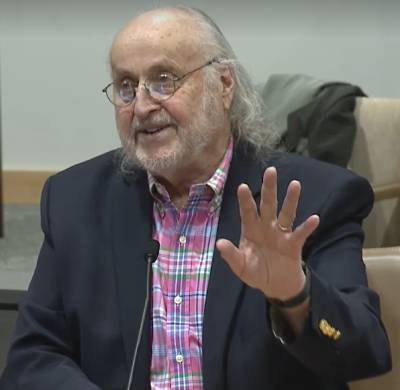
Matt Doll, Minnesota Environmental Partnership
On Wednesday, the Minnesota Senate Agriculture Committee heard testimony on two bills that would help build a growing agricultural revolution on Minnesota farmland by supporting research, development, and markets for new, regenerative crops. These bills have bipartisan support – a testament to their benefits to the evolving agricultural landscape in Minnesota, and to years of advocacy by MEP and allies for this water- and climate-friendly work.

The first bill, SF 3711, would fully fund the University of Minnesota’s Forever Green Initiative (FGI). As Professor Don Wyse explained to the committee, FGI conducts scientific research and development efforts on crops like Kernza®, hazelnuts, and oilseeds like pennycress and winter camelina. MEP has been a longtime supporter of Forever Green, recently helping to organize a field tour of the Initiative’s research sites on the UMN St. Paul campus.
FGI’s crops have numerous environmental advantages over traditional monocropping of corn and soybeans, though some of them can also be integrated into the existing system. Some of these crops, such as Kernza, develop deep root systems that help prevent nutrient pollution from infiltrating groundwater and making people sick. Others provide habitat for pollinators and other wildlife. Some are perennials, protecting soil all year round, while others like winter camelina are annual crops that can protect soil during the winter and very early spring when other crops aren’t growing. All of them help retain carbon and water in the soil, all of them can grow in Minnesota, and importantly, all of them have viable or developing commercial uses.
Addressing that commercialization step is where SF 3271 comes into play. It’s another bipartisan bill that would support the development of supply chains and markets for these crops. While their applications are numerous, including food, fuel, and bioplastics, we need to build up these infrastructure components just as we did for crops like corn and soybeans, allowing farmers to reap the benefits of renewable agriculture.
Fortunately, it’s not just environmental groups like MEP leading the way on these positive developments. The committee heard testimony in favor of SF 3711 from General Mills scientist Dr. Steven Rosenzweig and Windom Mayor Dominic Jones. “I see this Kernza grass, for instance, as a very positive and efficient and profitable way that we can stop the nutrient (pollution) before it gets to our aquifers,” said Jones.
Testifiers in favor of the commercialization investments in SF 3271 included representatives from the Minnesota Farmers Union, Albert Lea Seed, and PURIS Foods. Anne Schwagerl, Vice President of the Farmers Union, said, “This bill in front of you…is the rare opportunity to respond to multiple challenges all at once. With your support, we can create new opportunities not only for farmers, but even more so for entrepreneurs and businesses as well.”
The fact that Minnesota organizations, businesses, and political leaders are increasingly getting behind this new generation of crops is a good sign for Minnesota farmers, rural communities, and the environment in which we live. That broad support has come from years of research, advocacy, and the fact that it simply makes sense for Minnesota. University of Minnesota alumnus Norman Borlaug helped spur the 1950s Green Revolution that massively increased crop production around the world. Now, Minnesota’s flagship university is sowing the seeds for a new Green Revolution to benefit both people and the planet.
For previous columns, visit mepartnership.org/category/blog/. If you would like to reblog or republish this column, you may do so for free – simply contact the author at matthew@mepartnership.org.